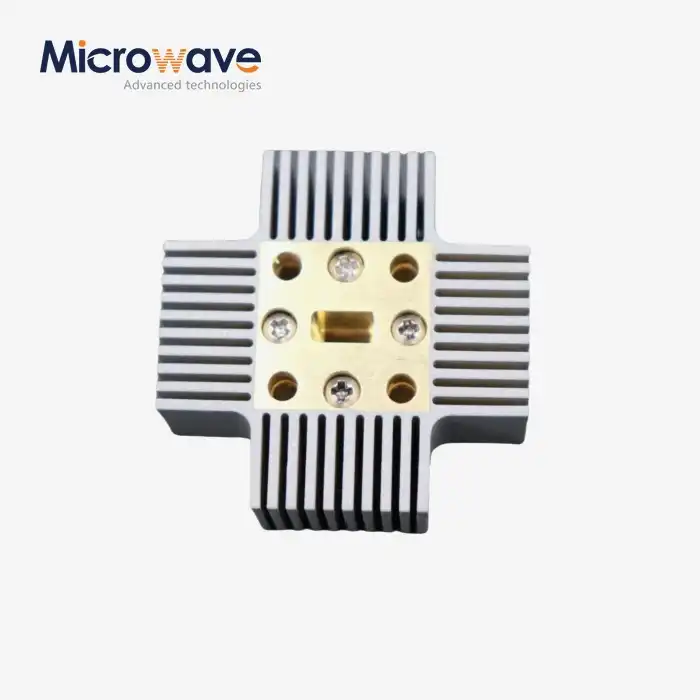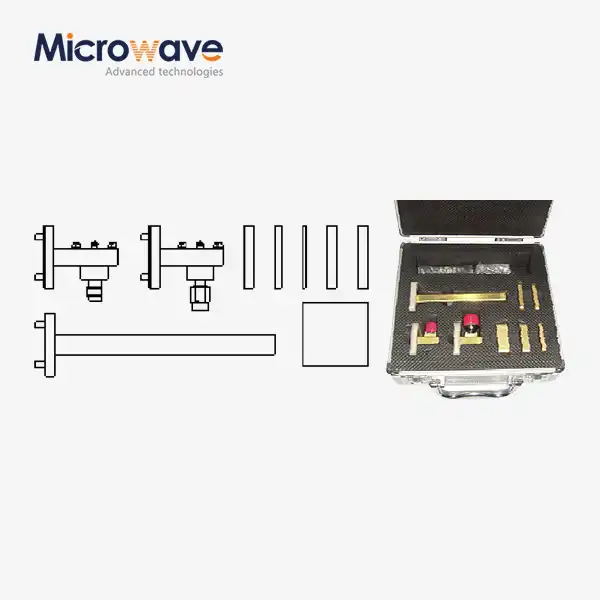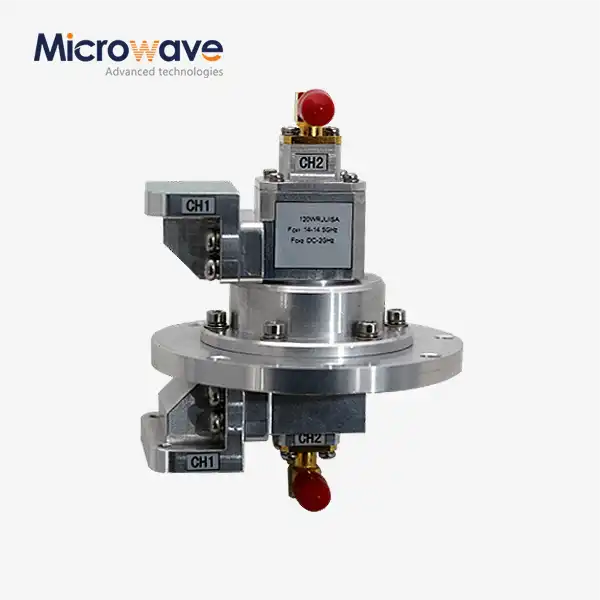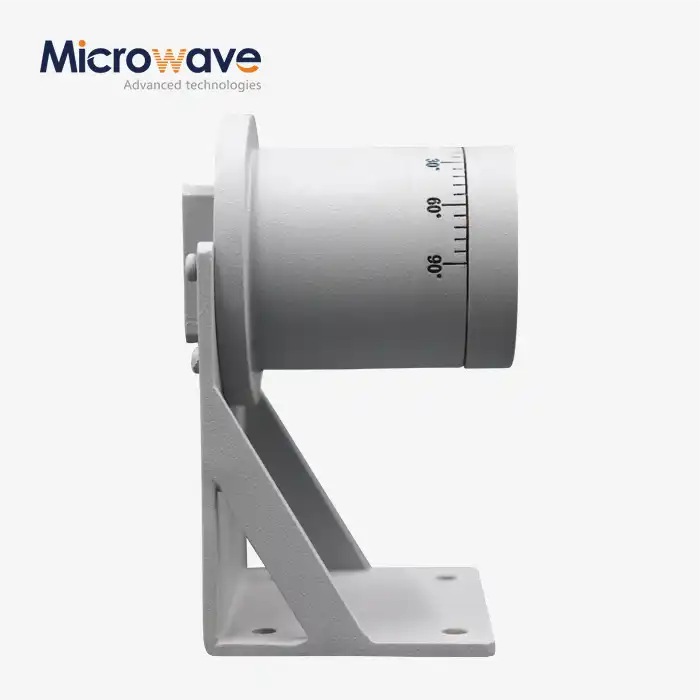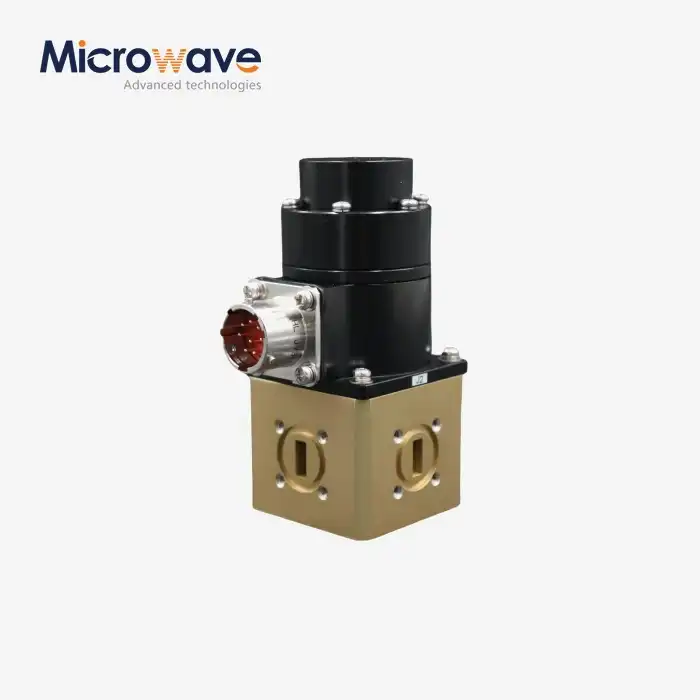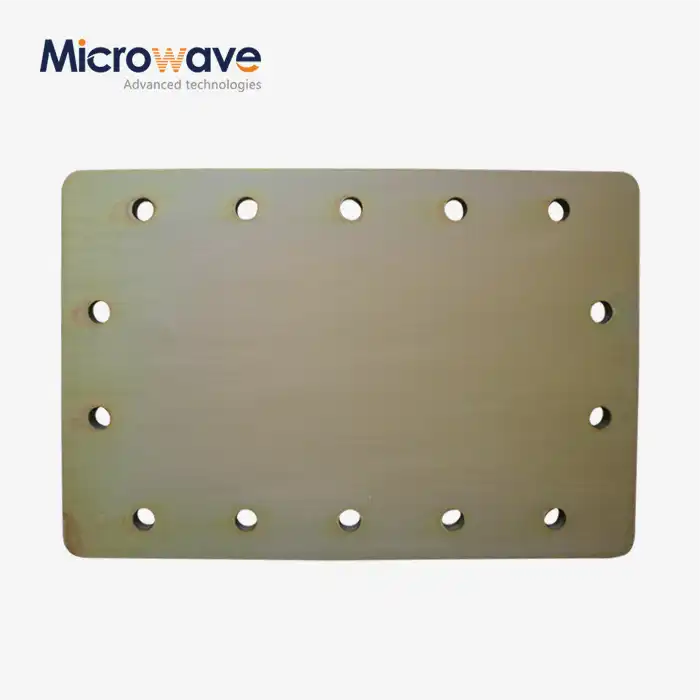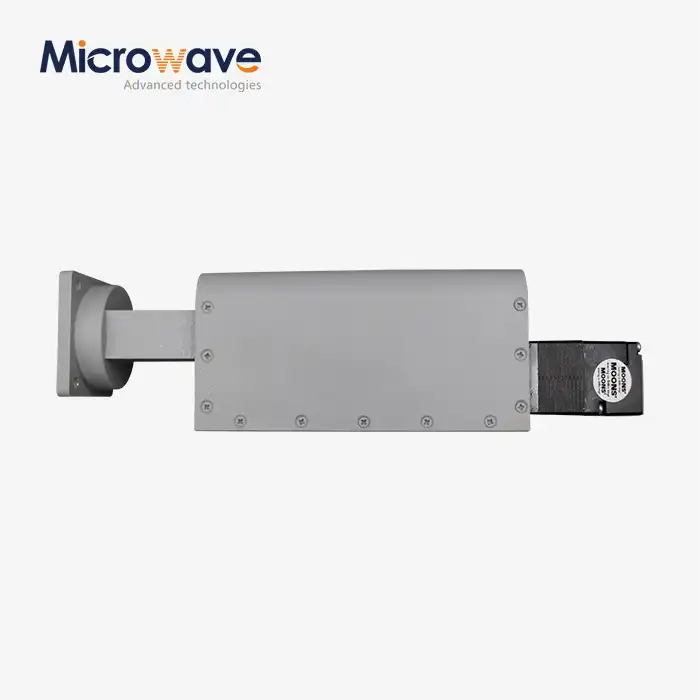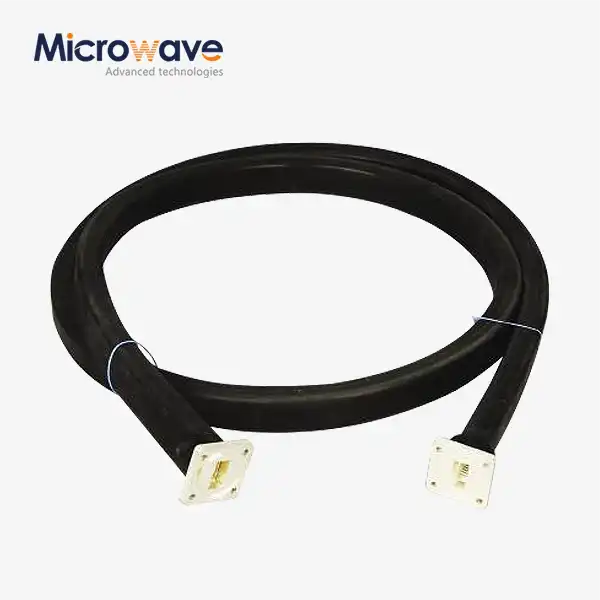What is the efficiency of slotted waveguide antenna?
In the demanding world of satellite communications, radar systems, and aerospace applications, engineers constantly face the critical challenge of achieving maximum signal transmission efficiency while minimizing power losses. When system failures occur due to inadequate antenna performance, the consequences can be catastrophic - from failed satellite missions costing millions to compromised defense operations. The efficiency of slotted waveguide antennas represents a make-or-break factor that determines whether your high-frequency communication system will deliver reliable, high-performance results or fall short of mission-critical requirements. Modern Slotted Waveguide Array Antenna systems can achieve remarkable efficiency levels, typically ranging from 85% to over 95%, making them the preferred choice for applications where signal integrity and power efficiency are paramount to operational success.
Understanding Slotted Waveguide Array Antenna Efficiency Fundamentals
The efficiency of a Slotted Waveguide Array Antenna is fundamentally defined as the ratio of radiated power to the total input power supplied to the antenna system. This critical parameter encompasses various loss mechanisms that can significantly impact overall system performance. In practical applications, antenna efficiency directly determines how much of the transmitted power actually reaches its intended destination, making it a crucial factor in system design and performance optimization. Modern Slotted Waveguide Array Antenna designs achieve exceptional efficiency levels through careful engineering of the waveguide structure, slot dimensions, and feed network configuration. The efficiency typically ranges from 85% to 95% for well-designed systems, with some advanced implementations achieving even higher values. This high efficiency is primarily attributed to the low-loss characteristics of waveguide transmission, minimal dielectric losses, and optimized slot coupling mechanisms that ensure maximum power transfer from the waveguide to free space. The efficiency calculation involves several key components including conductor losses, dielectric losses, mismatch losses, and spillover losses. Conductor losses occur due to the finite conductivity of the waveguide walls and are typically minimized through proper material selection and surface treatment. Dielectric losses are generally negligible in air-filled waveguides, contributing to the superior efficiency characteristics of Slotted Waveguide Array Antenna systems compared to microstrip or other printed antenna technologies.
Factors Affecting Slotted Waveguide Array Antenna Efficiency
Multiple factors contribute to the overall efficiency of Slotted Waveguide Array Antenna systems, each requiring careful consideration during the design phase. Waveguide dimensions play a crucial role, as oversized waveguides can support unwanted higher-order modes that lead to power dissipation, while undersized guides result in increased conductor losses due to higher current densities on the waveguide walls. Slot geometry and positioning significantly impact efficiency through their influence on coupling strength and radiation characteristics. The slot length, width, and offset from the waveguide centerline must be precisely calculated to achieve optimal power coupling while maintaining impedance matching throughout the operating bandwidth. Advanced design techniques utilize computer modeling and optimization algorithms to determine the ideal slot parameters that maximize efficiency across the desired frequency range. The feed network design represents another critical factor affecting Slotted Waveguide Array Antenna efficiency. Corporate feed networks, while providing excellent amplitude and phase control, introduce additional losses through their complex structure. Series feed networks, commonly used in traveling-wave arrays, offer simpler construction but may suffer from efficiency degradation due to the required termination load. Modern designs often employ hybrid approaches that balance efficiency requirements with practical manufacturing constraints.

Performance Characteristics of High-Efficiency Slotted Waveguide Arrays
Radiation Efficiency Optimization Techniques
Advanced Slotted Waveguide Array Antenna systems employ sophisticated optimization techniques to maximize radiation efficiency while maintaining desired radiation pattern characteristics. The radiation efficiency specifically refers to the portion of input power that is successfully radiated into free space, excluding losses due to conductor resistance, dielectric absorption, and impedance mismatches. One primary optimization approach involves the careful design of slot aperture distributions to minimize sidelobe levels while maintaining high efficiency. Tapered distributions, such as Chebyshev or Taylor patterns, allow designers to achieve specific sidelobe level requirements while optimizing power transfer efficiency. These distributions require precise control of slot coupling strengths, which is achieved through variations in slot dimensions, orientations, and positions relative to the waveguide axis. The use of advanced materials and manufacturing techniques has significantly enhanced the efficiency potential of modern Slotted Waveguide Array Antenna systems. High-conductivity materials such as silver or copper plating reduce conductor losses, while precision manufacturing techniques ensure consistent slot dimensions and waveguide tolerances. Surface roughness control has become increasingly important at higher frequencies, where skin effect losses can significantly impact overall efficiency. Temperature stability represents another crucial consideration for maintaining high efficiency across varying environmental conditions. Thermal expansion and contraction can alter slot dimensions and waveguide geometry, potentially degrading efficiency performance. Advanced designs incorporate thermal compensation techniques and material selection strategies to minimize temperature-induced efficiency variations, ensuring reliable performance across the specified operating temperature range.
Bandwidth and Efficiency Relationships
The relationship between operating bandwidth and efficiency in Slotted Waveguide Array Antenna systems represents a fundamental design trade-off that must be carefully managed. Narrow-band designs can achieve very high efficiency levels by optimizing the slot parameters for a specific frequency, while broad-band applications require compromise solutions that maintain acceptable efficiency across the entire operating bandwidth. Resonant slot designs typically provide the highest efficiency at their design frequency but suffer from rapid efficiency degradation as frequency deviates from the optimal point. Research has demonstrated that well-designed slotted waveguide arrays can achieve 90.2% antenna efficiency over 7.6% bandwidth, illustrating the potential for maintaining high efficiency across practical operating bandwidths. Traveling-wave configurations offer broader bandwidth capabilities but often at the expense of reduced efficiency due to the power absorbed by the termination load. The efficiency of traveling-wave Slotted Waveguide Array Antenna systems typically ranges from 70% to 85%, depending on the array length and termination design. Recent advances in termination techniques, including reactive terminations and reflection-based designs, have improved the efficiency potential of traveling-wave arrays while maintaining their inherent bandwidth advantages. Multi-octave bandwidth requirements present particular challenges for efficiency optimization, often requiring innovative feed network designs and slot configurations. Stepped impedance transformers, broadband matching networks, and frequency-independent slot designs have been developed to address these challenges while maintaining acceptable efficiency levels across extremely wide bandwidths.
Advanced Design Considerations for Maximum Efficiency
Feed Network Optimization Strategies
The feed network design represents one of the most critical aspects of achieving high efficiency in Slotted Waveguide Array Antenna systems. Corporate feed networks, while providing excellent control over amplitude and phase distributions, introduce insertion losses through their multiple division and combination stages. Each waveguide junction, bend, and transition contributes to the overall loss budget, requiring careful optimization to maintain high system efficiency. Series feed networks offer potential efficiency advantages through their simpler structure and reduced number of components. However, the fundamental limitation of series feeding lies in the required termination load, which necessarily absorbs a portion of the input power. Advanced termination designs, including reactive loads and reflection-based techniques, have been developed to minimize these losses while maintaining proper impedance matching throughout the array. Hybrid feed network architectures combine the advantages of both corporate and series feeding approaches, utilizing series feeding for subarrays that are combined through corporate networks. This approach allows designers to optimize efficiency at multiple levels, minimizing losses in both the distribution network and the radiating elements. The Slotted Waveguide Array Antenna systems using hybrid feeds can achieve efficiency levels exceeding 90% while maintaining excellent pattern control and bandwidth characteristics. The integration of active components within the feed network has opened new possibilities for efficiency optimization. Active arrays utilizing distributed amplification can compensate for feed network losses while providing additional functionality such as beam steering and null formation. However, the power consumption and reliability implications of active components must be carefully balanced against the efficiency benefits they provide.
Manufacturing Precision and Efficiency Impact
Manufacturing precision plays a crucial role in achieving the theoretical efficiency potential of Slotted Waveguide Array Antenna designs. Dimensional tolerances on slot geometry, waveguide cross-sections, and feed network components directly impact impedance matching and coupling characteristics, which in turn affect overall efficiency performance. Modern manufacturing techniques, including computer numerical control (CNC) machining, electrical discharge machining (EDM), and additive manufacturing, have enabled unprecedented precision in Slotted Waveguide Array Antenna fabrication. These advanced manufacturing capabilities allow designers to implement complex geometries and tight tolerances that were previously impractical, resulting in improved efficiency and performance consistency. Surface finish quality has become increasingly important as operating frequencies have extended into millimeter-wave regions. Surface roughness effects on conductor losses can significantly impact efficiency at frequencies above 30 GHz, requiring specialized finishing techniques such as electroplating, chemical polishing, and precision machining. The selection of appropriate surface treatments must consider both electrical performance requirements and manufacturing cost constraints. Quality control and measurement techniques play essential roles in ensuring that manufactured Slotted Waveguide Array Antenna systems achieve their design efficiency targets. Advanced measurement systems, including near-field and far-field ranges, provide detailed characterization of antenna performance, allowing manufacturers to verify efficiency levels and identify potential improvement opportunities.

Real-World Applications and Efficiency Requirements
Aerospace and Defense Applications
Aerospace and defense applications place demanding efficiency requirements on Slotted Waveguide Array Antenna systems due to strict power budgets, thermal constraints, and mission-critical performance needs. Satellite communication systems, in particular, require maximum efficiency to optimize link budgets and extend mission lifetimes. The efficiency of the antenna system directly impacts the required transmitter power, battery capacity, and thermal management complexity. Military radar systems demand high efficiency to maximize detection range while minimizing electromagnetic signature. Modern millimeter-wave tracking radar applications have achieved radiation efficiency levels of 95.21% at 35 GHz, demonstrating the capability of well-designed Slotted Waveguide Array Antenna systems to meet stringent military requirements. These high efficiency levels enable extended detection ranges and improved target discrimination capabilities. Aircraft-mounted antenna systems face additional challenges related to aerodynamic constraints, weight limitations, and environmental exposure. The efficiency requirements for these applications must be balanced against mechanical considerations such as vibration resistance, temperature cycling, and structural integrity. Advanced materials and design techniques have enabled the development of high-efficiency Slotted Waveguide Array Antenna systems that meet both electrical and mechanical requirements for aerospace applications. Space-based applications represent the ultimate efficiency challenge, where every watt of power is precious and replacement or repair is impossible. Slotted Waveguide Array Antenna systems for satellite applications must maintain high efficiency across wide temperature ranges while withstanding radiation exposure and mechanical stresses. The long-term reliability requirements for space applications necessitate conservative design approaches that prioritize proven efficiency performance over cutting-edge optimization techniques.
Commercial Communication Systems
Commercial communication systems, including cellular base stations, point-to-point links, and broadcasting applications, require cost-effective Slotted Waveguide Array Antenna solutions that maintain high efficiency while meeting economic constraints. The efficiency requirements for these applications are driven by operating cost considerations, regulatory compliance, and competitive performance needs. Base station antennas for 5G and beyond networks require high efficiency to support the increased data rates and coverage requirements of modern wireless systems. The Slotted Waveguide Array Antenna technology offers advantages in terms of efficiency, bandwidth, and multi-beam capabilities that are essential for advanced cellular applications. The ability to maintain high efficiency across wide scan angles enables optimized coverage patterns and improved system capacity. Point-to-point microwave links rely on high-efficiency antennas to maximize link budgets and enable longer transmission distances. The efficiency of the antenna system directly impacts the feasibility and cost of microwave links, particularly in challenging propagation environments. Slotted Waveguide Array Antenna systems provide the combination of high efficiency, narrow beamwidth, and excellent pattern stability required for reliable point-to-point communication. Broadcasting applications, including satellite direct-to-home services and terrestrial broadcasting, benefit from the high efficiency and pattern control capabilities of Slotted Waveguide Array Antenna systems. The ability to shape radiation patterns for optimized coverage while maintaining high efficiency enables broadcasters to serve their target markets effectively while minimizing interference to adjacent services.
Measurement and Verification of Antenna Efficiency
Laboratory Testing Methodologies
Accurate measurement of Slotted Waveguide Array Antenna efficiency requires sophisticated test facilities and measurement techniques that account for all loss mechanisms present in the antenna system. The total efficiency measurement encompasses radiation efficiency, impedance mismatch losses, and polarization losses, providing a comprehensive assessment of antenna performance. Anechoic chamber measurements represent the gold standard for antenna efficiency characterization, providing controlled environments that eliminate external interference and reflections. The measurement setup must account for range limitations, probe corrections, and calibration standards to ensure accurate efficiency measurements. Advanced measurement systems utilize multiple probe positions and polarizations to characterize the complete radiation pattern and calculate total radiated power. Near-field measurement techniques offer advantages for large Slotted Waveguide Array Antenna systems where far-field ranges may be impractical. Near-field to far-field transformation algorithms enable accurate efficiency calculations from near-field data, while providing additional benefits such as rapid measurement times and detailed amplitude and phase information. The accuracy of near-field efficiency measurements depends critically on probe calibration, measurement grid density, and transformation algorithm implementation. Calorimetric methods provide direct measurement of antenna efficiency by comparing input electrical power to radiated RF power. These techniques are particularly valuable for high-power applications where precise efficiency measurements are required for thermal management and regulatory compliance. However, calorimetric measurements require specialized facilities and are typically limited to lower frequency applications due to measurement complexity.

Simulation and Design Validation
Modern Slotted Waveguide Array Antenna design relies heavily on electromagnetic simulation tools to predict efficiency performance and optimize design parameters. Full-wave simulation methods, including finite element method (FEM), method of moments (MoM), and finite difference time domain (FDTD) techniques, provide detailed analysis of all loss mechanisms and enable accurate efficiency predictions. The accuracy of simulation results depends critically on proper modeling of material properties, boundary conditions, and excitation sources. Conductor losses require accurate modeling of skin effect and surface roughness effects, particularly at higher frequencies where these mechanisms become significant. Advanced simulation tools incorporate sophisticated material models and loss mechanisms to provide reliable efficiency predictions that correlate well with measured results. Design optimization algorithms, including genetic algorithms, particle swarm optimization, and gradient-based methods, enable automated optimization of Slotted Waveguide Array Antenna designs for maximum efficiency. These optimization techniques can simultaneously consider multiple design objectives, including efficiency, sidelobe levels, bandwidth, and manufacturing constraints, to identify optimal design solutions. Validation of simulation results through comparison with measured data is essential for establishing confidence in design predictions. The correlation between simulated and measured efficiency provides insight into modeling accuracy and identifies areas where simulation improvements may be needed. Continuous refinement of simulation models based on measurement feedback enhances the reliability of future design predictions and reduces development time and cost.
Conclusion
The efficiency of slotted waveguide antennas represents a critical performance parameter that typically ranges from 85% to 95% in well-designed systems, with some advanced implementations achieving even higher levels. This exceptional efficiency stems from the low-loss characteristics of waveguide transmission, optimized slot coupling mechanisms, and careful attention to design details including feed networks, materials selection, and manufacturing precision. Understanding and optimizing these efficiency factors is essential for developing high-performance communication systems that meet the demanding requirements of modern aerospace, defense, and commercial applications.
Cooperate with Advanced Microwave Technologies Co., Ltd.
As a leading China Slotted Waveguide Array Antenna manufacturer with over 20 years of experience, Advanced Microwave Technologies Co., Ltd. delivers superior microwave solutions through our state-of-the-art 24m Microwave Darkroom and comprehensive testing capabilities. Our High Quality Slotted Waveguide Array Antenna products, certified to ISO 9001:2015 standards, serve global markets with exceptional efficiency and reliability. Whether you're seeking a trusted China Slotted Waveguide Array Antenna supplier for aerospace applications or competitive Slotted Waveguide Array Antenna price for commercial projects, we provide customized solutions with fast delivery and professional technical support. Our China Slotted Waveguide Array Antenna wholesale services ensure cost-effective access to premium Slotted Waveguide Array Antenna for sale. Contact craig@admicrowave.com today for your requirements and discover why we're the preferred China Slotted Waveguide Array Antenna factory worldwide.
FAQ
Q: What is the typical efficiency range for slotted waveguide array antennas?
A: Modern slotted waveguide array antennas typically achieve efficiency levels between 85% to 95%, with some advanced designs exceeding 95% efficiency.
Q: How does frequency affect slotted waveguide antenna efficiency?
A: Efficiency generally decreases at higher frequencies due to increased conductor losses and manufacturing tolerances, but well-designed systems maintain high efficiency across their operating bandwidth.
Q: What factors most significantly impact slotted waveguide antenna efficiency?
A: Key factors include conductor losses, slot coupling optimization, feed network design, impedance matching, and manufacturing precision of slot dimensions and waveguide geometry.
Q: Can slotted waveguide antennas maintain high efficiency over wide bandwidths?
A: Yes, properly designed systems can maintain over 90% efficiency across bandwidths of 7-10%, though ultra-wideband applications may require efficiency trade-offs.
References
1. Tyagi, A., et al. "High‐efficiency broadband slotted waveguide array antenna." IET Microwaves, Antennas & Propagation, 2017.
2. Kumar, S., Singh, R. "Ultra-low SLL slotted waveguide antenna array using Chebyshev aperture distribution function for MM-wave tracking radar applications." Alexandria Engineering Journal, 2023.
3. Chen, L., Wang, M. "Gap waveguide slot array antenna based on a metal-only solution using additive manufacturing with multifunctional sum/difference radiation pattern." Scientific Reports, 2025.
4. Elliott, R.S., Stern, G.J. "A new technique for controlling the side lobe level of antenna arrays." IEEE Transactions on Antennas and Propagation, 1984.




